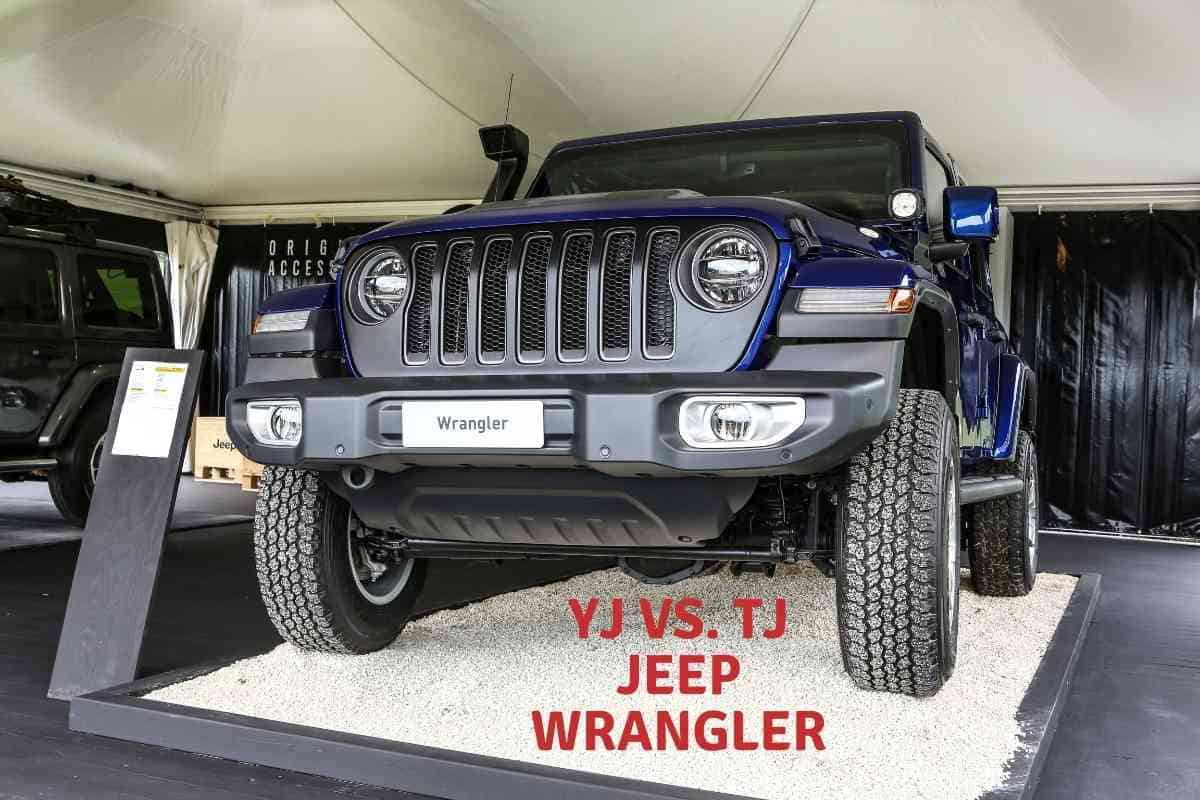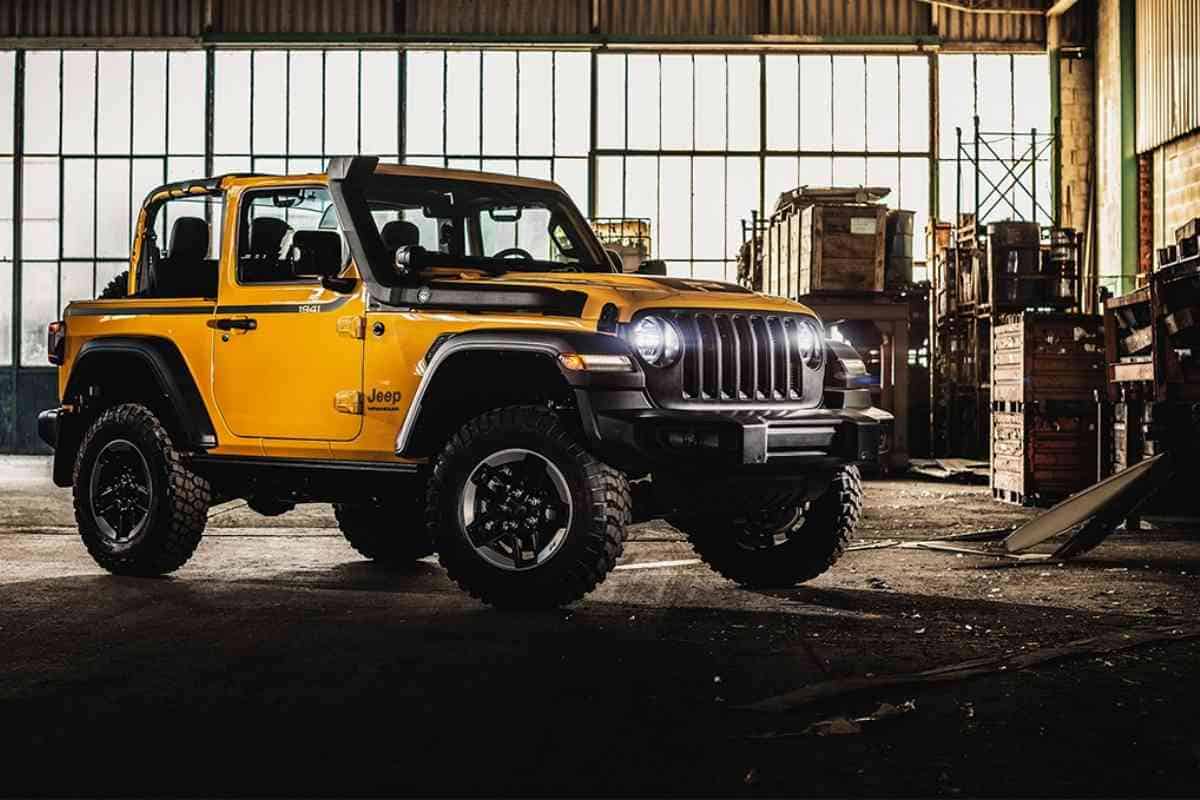What’s The Difference Between a YJ and TJ Jeep? Here’s The Ultimate Guide!
Discover the key distinctions between two iconic Jeep models in “What’s The Difference Between a YJ and TJ Jeep?”, where we break down the unique features and advancements of each. This guide offers a clear comparison to help Jeep enthusiasts and potential buyers make an informed choice.
Jeep Wrangler has gone through four iterations since its inception in 1987. The YJ and TJ Jeep Wranglers are the first two versions.

They appear very similar at a glance, visually and in design. So, what’s the difference between a YJ and TJ Jeep?
What’s The Difference Between a YJ and TJ Jeep?
The YJ Jeep Wrangler is the first model ever made and ran from 1987 to 1996. The TJ is the second generation and ran from 1997 to 2006. In 1987 the Jeep Wrangler YJ replaced and modernized the long-running CJ Series.
After a good run for the Wrangler YJ model, the Wrangler TJ built on the success. So, what’s the difference between a YJ and TJ Jeep?
The Wrangler modernized the CJ by widening the track, adding an angled grille, rectangular headlamps, and an updated interior.
Aficionados credit the Jeep Wrangler for making the simple and rugged CJ look more civilized.
The TJ was a throwback to the old CJ appearance, but the design featured several technological breakthroughs in on and offroad handling and effectiveness.
How Do the YJ and TJ Jeep Wranglers Differ?
In terms of performance, the YJ and TJ Wranglers are similar, despite some differences. So, what’s the difference between a YJ and TJ Jeep? It’s appearances
Jeep made bold choices with the exteriors of both models while making minor tweaks under the hood and to the designs.
The Appearance of the Jeep Wrangler YJ
The Wrangler YJ has square headlights and a taller grille with a bend in the middle.
The turn signal lights sit below the headlights, slightly off-set from the headlights’ centerline and close to the bottom third of the grille.
The windshield wipers on the YJ rest on the windshield, and the hood sits a few inches below.
The hood remains relatively flat to the end and appears to wrap around the outside edges of the headlights.
The Appearance of the Jeep Wrangler TJ
The TJ line has similar circular headlights to the CJ line that predates the first Wrangler.
The turn signal lights sit on either side of the headlights away from the grille.
The grille looks relatively flat and short because the hood slants down to the front to aid aerodynamics.
The back of the hood comes close to the windshield.
The bases of the wipers touch the hood, and the blades rest at the bottom of the windshield.
What’s The Difference Between YJ And TJ Jeep In Performance

On paved roads, the performance of a Wrangler reflects the off road experience, minus the bumps, dips, skids, and slides.
We can focus on the off road since people still love these Wrangler models when adventuring, not as around town, back and forth to work automobiles. So, what’s the difference between a YJ and TJ Jeep in performance? Not much.
Jeep did not make meaningful changes to the engines, transmissions, and axles on these two Wrangler lines until the Rubicon came out in 2003.
The previous years dating back to 1987, amount to sixteen years where the Jeep Wrangler did not feel that different to drive in any model.
Wranglers were, and still are, so well designed that people love driving them wherever they are, and the design does not need to change much.
Updating the design to keep pace with modern trends and remain competitive is a must, but Jeep fans love Wranglers for what they are and have always been.
Wrangler YJ Performance
When we answer “what’s the difference between a YJ and TJ Jeep?” We see that performance is crucial.
The YJ line did not perform as well offroad as its predecessor, the CJ, or the TJ series.
The YJ sits a little closer to the ground and has leaf springs, instead of coils, so the offroad performance takes a hit.
Leaf springs work better for heavy vehicles and towing, but coil springs are superior when offroading.
The choice of leaf springs in the YJ seems like a combination of Jeep not understanding the market and saving money because coil springs cost more.
The Wrangler YJ line had four different engine options:
- 2.5 L AMC straight-four engine (with fuel injection) with 121 horsepower (hp) and 135 lb-ft of torque
- 2.5 L AMC straight-four engine (with multi-port injection) with 130 hp and 139 lb-ft of torque
- 4.2 L AMC straight-six engine with 112 hp and 210 lb-ft of torque
- 4.0 L AMC straight-six engine with 190 hp and 220 lb-ft of torque
By today’s standards, these are not powerful engines, but at the time they made the Jeep Wrangler a smashing success, especially beloved for its off road prowess.
Wrangler TJ Performance
The TJ received an upgrade to Quadra-Coil springs for the suspension, improving the off road experience by raising the body higher.
The ground clearance is crucial in the offroading community as a minimum of 8.8 inches fosters confidence that hazards, such as rocks and dangerous tree stumps, will not cause damage.
The early TJ years came close to the 8.8-inch mark at 8.5 inches but needed aftermarket adjustments to get more clearance.
In later models after the TJ years, the ground clearance improved and went up to ten inches or more on certain models.
The Wrangler TJ dropped to three engine options:
- 2.4 L PowerTech I4 (Post-2003) with 147 hp and 165 lb-ft of torque
- 2.5 L PowerTech I4 with 120 hp and 140 lb-ft of torque
- 4.0 L PowerTech I6 with 190 hp and 235 lb-ft of torque
Though the TJ engines put out a bit more power than the YJ line, modern engines get much better performance with more efficiency.
But early Jeeps weighed less, sometimes half as much, and the old engines made the experience a lot of fun for the times.
The 2003 Rubicon
The Rubicon represented enough of a divergence from the TJ line—despite technically qualifying as a second-generation Wrangler until 2006—to warrant a separate mention.
The Rubicon is the model that marked the moment the TJ line noticeably differed from the YJ line well beyond making changes to the body.
The interior received a substantial upgrade, and the offroad performance entered the modern era with multiple improvements.
The Rubicon rested on Dana 44 axles, air-actuated Tru-Lok, front and rear lockers, the 4×4 system made by Rock-Trac, 31-inch MT/R offroad tires by Goodyear, four-wheel disc brakes, and diamond-plate rock rails.
Then the Wrangler Unlimited came out in 2004 outfitted with a longer wheelbase, 13 inches more cargo room, and improved comfort on the road, enhancing offroad comfort in the process.
The following year, the Rubicon Unlimited used the same wheelbase as the Wrangler Unlimited, combined with the offroad advantages the Rubicon possessed.
These improvements built on prior Wrangler achievements and made Jeep synonymous with adventure driving.
Which Is Better, the YJ or TJ?
Better is not an easy word to use objectively because the best Wrangler is in the eye of the beholder.
The TJ line outperformed the YJ line, especially once the Rubicon arrived.
Do Aftermarket Mods Make the YJ Equal or Better?
The mods available today allow a person to make an old Jeep as good as or better than the newest Jeep, at least for adventure driving.
Mods can upgrade or replace almost every part with higher quality products than Jeep uses, for a price.
Many members of the active Jeep community of enthusiasts are happy to pay the price to upgrade old models from the YJ line.
Is the Rubicon the Best Wrangler?
Many people feel the Rubicon is responsible for making the Jeep Wrangler the king of adventure offroading.
Even for Jeep enthusiasts who prefer older TJ or YJ body designs, the Rubicon’s impact is difficult to deny.
